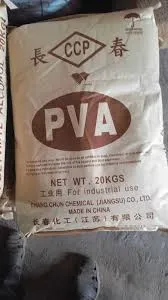Understanding HPMC Detergent Grade The Versatile Ingredient for Modern Cleaning Solutions
In the ever-evolving world of cleaning products, formulations that provide effective results while being gentle on materials and surfaces have become increasingly essential. One such remarkable ingredient that has garnered attention in recent years is Hydroxypropyl Methylcellulose (HPMC) in its detergent grade. This article seeks to explore what HPMC is, its properties, and its application in detergent formulations.
What is HPMC?
HPMC is a semi-synthetic polymer derived from cellulose, a natural polymer found in plant cell walls. Through a series of chemical processes, HPMC is modified to enhance its solubility and functional properties. The result is a versatile ingredient that can be tailored for various industrial applications, including those in the cosmetics, food, and pharmaceutical sectors. In the context of detergents, HPMC is particularly recognized for its efficiency as a thickener, stabilizer, and film-forming agent.
Properties of HPMC Detergent Grade
One of the key attributes of HPMC is its ability to dissolve in cold or hot water, making it easy to incorporate into liquid formulations. Its unique thickening properties allow manufacturers to achieve the desired viscosity without the need for additional thickeners. This property not only simplifies the formulation process but also improves the product's performance.
Moreover, HPMC is known for its excellent film-forming characteristics. When used in detergents, it creates a thin film that enhances the distribution of cleaning agents over surfaces, ensuring a more even application and better cleaning efficacy. Additionally, HPMC is non-ionic, meaning it does not interfere with the charged molecules of surfactants, allowing for optimal cleaning performance.
hpmc detergent grade

Another advantage of using HPMC in detergents is its stability across a wide range of pH levels. This feature is essential for formulating products that maintain performance and consistency regardless of external conditions. Furthermore, HPMC showcases biodegradability and low toxicity, making it suitable for environmentally friendly cleaning products. As consumers become more eco-conscious, formulations containing HPMC can appeal to those seeking safer, greener alternatives.
Applications of HPMC in Detergent Formulations
HPMC finds its way into various cleaning products, from household laundry detergents to specialized cleaners for industrial applications. In laundry detergents, HPMC serves to enhance the product's viscosity and stability, ensuring that the active ingredients remain evenly suspended. This results in more effective stain removal and overall superior cleaning performance.
In surface cleaners, HPMC’s film-forming ability allows for better adherence of the cleaning solution to surfaces, which aids in lifting dirt and grime away more effectively. Its properties help ensure that the cleaner remains moist on the surface for longer, allowing for a more thorough clean.
Furthermore, HPMC can also be used in combination with other polymers and surfactants to create multifunctional cleaning products that address specific cleaning challenges. For instance, in formulations designed for hard surfaces, HPMC can enhance the product's ability to reduce streaking and provide a polished finish.
Conclusion
HPMC detergent grade is a significant ingredient in the realm of cleaning products, combining effectiveness with environmental mindfulness. Its multifunctional properties, including thickening, film formation, and stability, make it an invaluable asset in formulating a variety of detergents. As the demand for efficient and sustainable cleaning solutions continues to grow, HPMC stands out as a promising candidate that meets modern consumers' needs. Its role in detergent formulations not only enhances performance but also aligns with the quest for safer and greener cleaning alternatives, solidifying its place in the future of the cleaning industry.
-
Rdp Powder: Key Considerations for Wholesalers in the Building Materials IndustryNewsJul.08,2025
-
Key Considerations for Wholesalers: Navigating the World of Hpmc - Based ProductsNewsJul.08,2025
-
Hpmc Detergent: Key Considerations for WholesalersNewsJul.08,2025
-
Key Considerations for Wholesalers: China Hpmc For Tile Adhesive, Coating Additives, Concrete Additives, and MoreNewsJul.08,2025
-
Crucial Considerations for Wholesalers: Navigating the World of Construction MaterialsNewsJul.08,2025
-
Key Considerations for Wholesalers Sourcing Additive For Cement, Additive For Concrete, Additive For Putty from Additive Manufacturer Shijiazhuang Gaocheng District Yongfeng Cellulose Co., Ltd.NewsJul.08,2025




